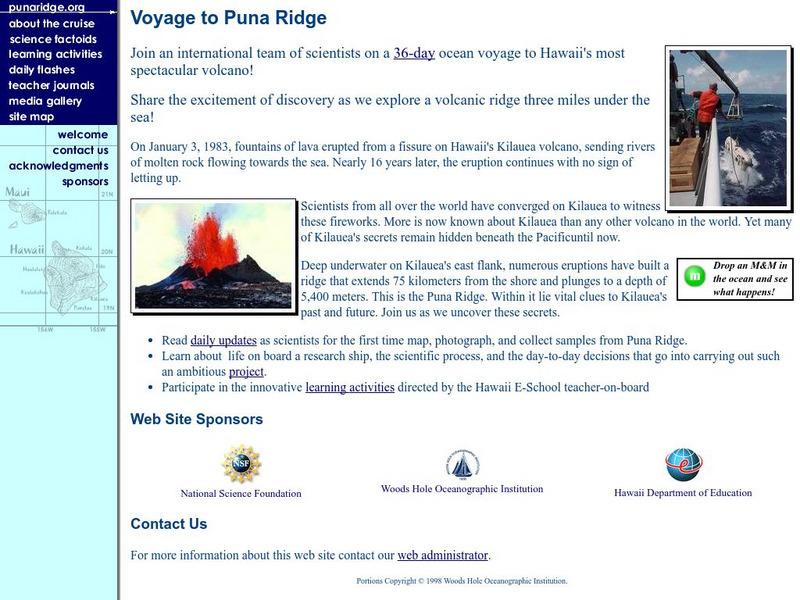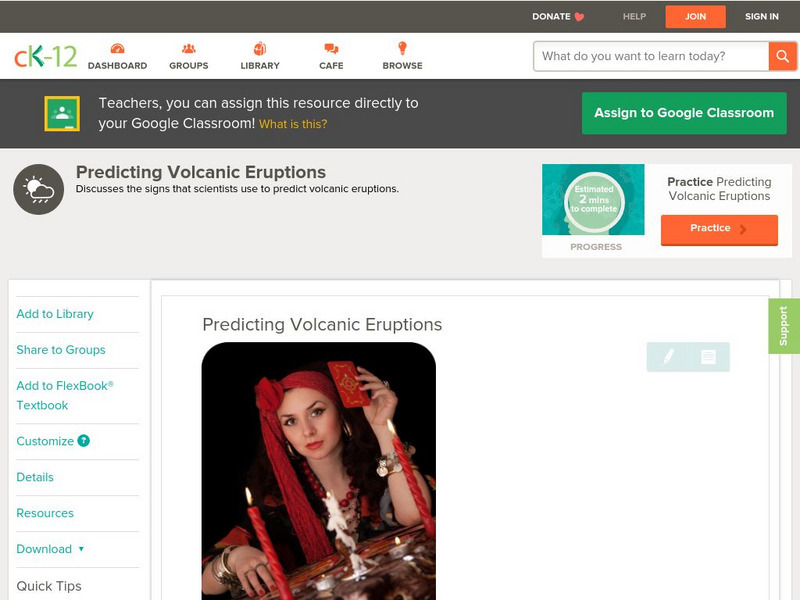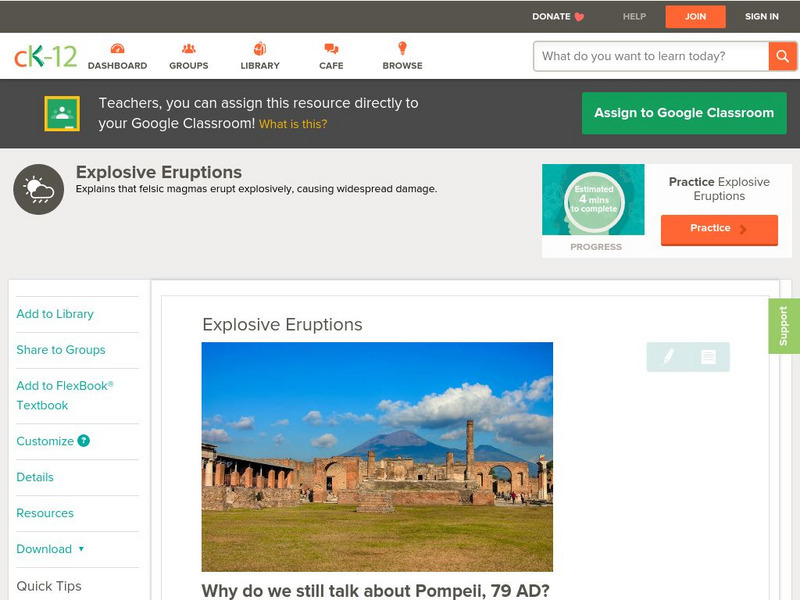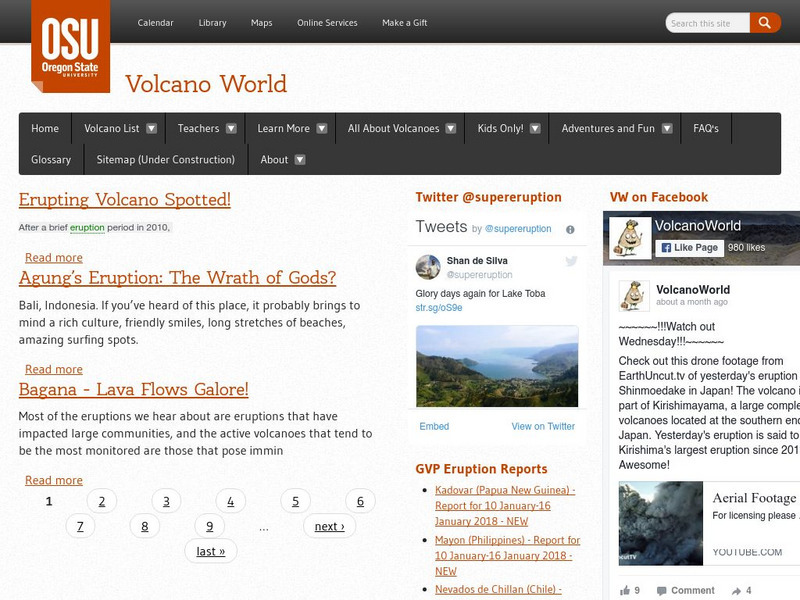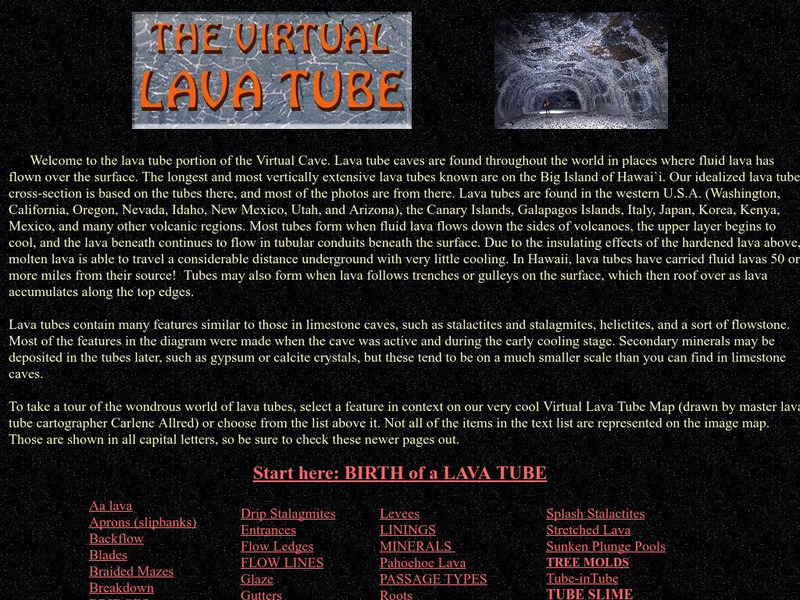US Geological Survey
Us Geological Survey: Volcanoes
This online book by Robert Tilling covers some key concepts such as eruptions, extraterrestrial volcanoes, and people and volcanoes.
US Geological Survey
U.s. Geological Survey: Volcanoes of the u.s.
This graphical and textual journey about the US volcanoes was made by Steven Brantley. There is an introduction, volcanoes and plate tectonics, Hawaiian volcanoes, cascade volcanoes, restless volcanoes, a glossary and further readings.
Smithsonian Institution
National Museum of Natural History: Global Volcanism Program: Volcanoes of the World
The Smithsonian Institute presents a searchable database on volcanoes of the world. Search by region, volcano name, or eruption date. There is also a chronological list of large eruptions during the last 10,000 years.
TeachEngineering
Teach Engineering: Ready to Erupt!
Students observe an in-classroom visual representation of a volcanic eruption. The water-powered volcano demonstration is made in advance, using sand, hoses and a waterballoon, representing the main components of all volcanoes. During...
Science Education Resource Center at Carleton College
Serc: Geo Logic: Volcanologists
With the help of GEOLogic puzzles, students are asked to resolve how many days each of several volcanologists spent at a volcano and what day they started for the volcano.
University of Hawai'i
University of Hawaii: Hawaii Center for Volcanology
This is the home page for the Hawaii Center for Volcanology. Look through this site and virtually visit the different volcanoes in Hawaii. Also provides a description of the formation of the Hawaiian Islands from volcanic activity.
Other
Puna Ridge: Voyage to Puna Ridge
On January 3, 1983, fountains of lava erupted from a fissure on Hawaii's Kilauea volcano, sending rivers of molten rock flowing towards the sea. Nearly 16 years later, the eruption continues with no sign of letting up. This site provides...
Other
Geocraft: When Ocean Floor and Continents Collide
Educational site provides users with some understanding of how a volcano forms through the process of subduction.
US Geological Survey
Us Geological Survey: Hawaiian Volcanoes
This site from the US Geological Survey provides general information about the Hawaiian volcanoes.
US Geological Survey
Us Geological Survey: How Hawaiian Volcanoes Work
This page from the US Geological Survey has several links to pages that explain the formation of volcanoes. These links will also explain the creation of new land and other hazards.
CK-12 Foundation
Ck 12: Earth Science: Predicting Volcanic Eruptions
[Free Registration/Login may be required to access all resource tools.] How scientists can predict volcanic eruptions.
CK-12 Foundation
Ck 12: Earth Science: Types of Volcanoes
[Free Registration/Login may be required to access all resource tools.] Different types of eruptions create different types of volcanoes.
CK-12 Foundation
Ck 12: Earth Science: Explosive Eruptions
[Free Registration/Login may be required to access all resource tools.] Explosive eruptions cause widespread damage and are very dangerous.
Oregon State University
Oregon State University: Volcano World
An educational portal that consolidates all kinds of useful information about volcanoes. Choose from a menu of topic options and start exploring or use the site's search tool to find just what you're looking for.
Woods Hole Oceanographic Institution
Woods Hole Oceanography Institute: Hot Topics: Lava Flows
How long does it take a volcano to grow? What are the different types of lava? What's a lava tube? All of these questions are addressed by this resource.
San Diego State University
San Diego State University: How Volcanoes Work: Eruption Types
Learn about the different ways that volcanoes erupt. These eruptions are closely related to the kind of volcanic activity that is occurring. Includes a quiz at the end.
CK-12 Foundation
Ck 12: Earth Science: Types of Volcanoes
[Free Registration/Login may be required to access all resource tools.] Different types of eruptions create different types of volcanoes.
American Geosciences Institute
American Geosciences Institute: Earth Science Week: Predict the Flow
Using a common modeling compound, students form a "volcano" and examine its topography to predict which way lava will flow down its slopes.
Other
Goodearth Graphics: The Virtual Lava Tube
Explore this photo archive from Goodearth Graphics to learn more about lava formations and effects.
US Geological Survey
U.s. Geological Survey: Quick Reference for Volcano Types
Succinct descriptions of the different kinds of volcanoes, with additional links for each.
Oregon State University
Volcano World: Types of Volcanoes
A reference page describing the different types of volcanoes.
Oregon State University
Volcano World: Eruption Styles
Study the different eruption styles with this reference page that discusses the characteristics of the eruption styles.
Oregon State University
Volcano World: Submarine Volcanoes
Did you know the most productive volcanic systems on Earth are beneath the ocean? This reference page will explore the features and properties of these submarine volcanoes.
ClassFlow
Class Flow: Volcanoes
[Free Registration/Login Required] This flipchart discusses the parts of a volcano and where some are located.








